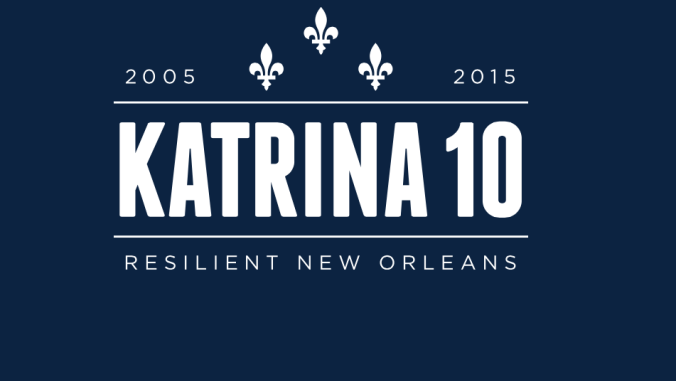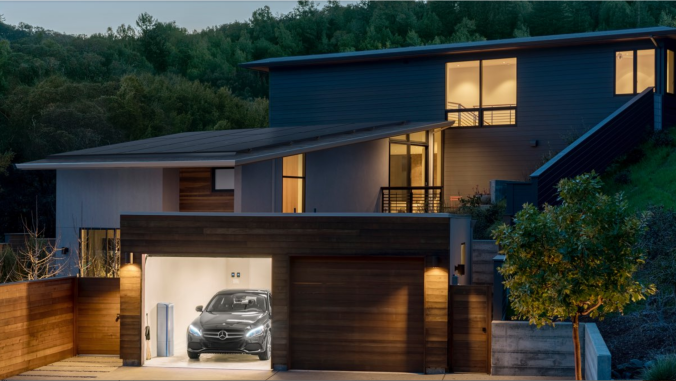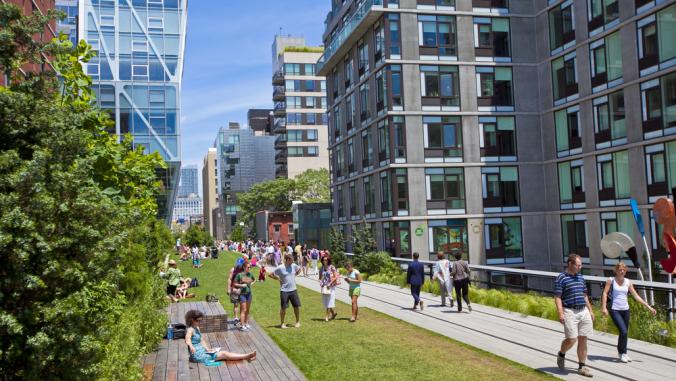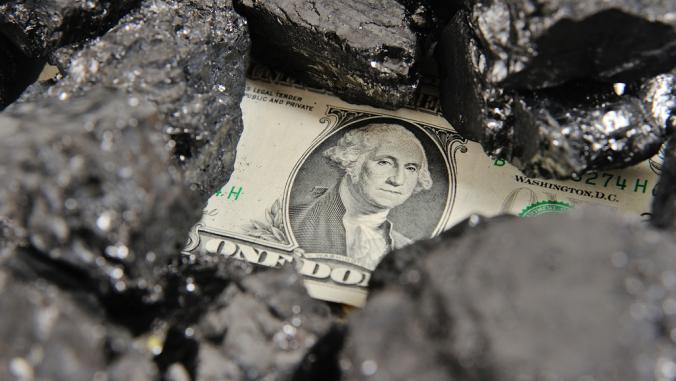Van Jones on the green jobs gap and what's wrong with resilience
The Obama administration veteran and environmental justice champion weighs in on the the Clean Power Plan, the solar boom and "leapfrog economics."

"As the new green economy springs to life, will we live in eco-equity or eco-apartheid?"
Van Jones first posed the question back in 2005, when a strong economy wasn't doing much to budge wealth disparities between individuals of different races and cost-prohibitive renewable energy was still stuck on the fringes.
Now, amid a surge in clean energy and mounting anxiety about unevenly distributed economic opportunity — particularly in systemically under-served, poor communities of color — the nexus between social and environmental issues is more relevant than ever.
Jones, as a social and environmental justice activist, attorney, former White House green jobs adviser and media commentator, has founded multiple organizations to address these interconnected issues.
The nonprofit Ella Baker Center for Human Rights was founded in Oakland in 1996, while Color of Change was launched in the 2005 aftermath of Hurricane Katrina and the green jobs outfit Green For All kicked off in 2007.
After a short time in the Obama administration marked by intense criticism from conservatives, Jones in 2011 launched a progressive political nonprofit, Rebuild the Dream, described by The Nation as a "liberal alternative to the Tea Party." Among the group's programs: Yes We Code, a tech skills training program for low-income and minority youth.
In an edited GreenBiz interview, Jones talked expanding access to clean energy, what's still missing in the green jobs market and why he doesn't even really like the word "sustainability."
Lauren Hepler: What’s top of mind for you right now when it comes to sustainability?
Van Jones: President Obama’s new climate rules, the so-called Clean Power Plan, opens the door for tremendous innovation in all 50 states. These new rules really should be the magnet that draws everybody together.
If we implement Obama’s climate rules the right way, we’re going to be pushing down on pollution and pulling up on solutions coast to coast. The shocking thing to me is that nobody seems to have noticed that. We do have new rules that tell power plants they have to stop polluting so much and give every state the opportunity to come up with its own plan for doing so.
The exciting thing is you can come up with a plan that accelerates putting solar panels up in poor neighborhoods, planting urban forests, delivering free bus passes, creating more mass transit. Or, you could create a plan that cuts a lot of carbon but doesn’t cut any poverty. If you’re going to start passing policies, we should cut pollution and poverty at the same time.
We should green the ghetto first. Those communities that were hit first and worst by everything bad in the pollution-based economy shouldn’t then benefit last and least from everything in the green economy.
Hepler: What about at the international level? We have the new United Nations Sustainable Development Goals and the Paris climate talks coming up at the end of this year.
Jones: I think you have to work at all levels, from your individual purchasing choices all the way up to international gatherings in Paris. You never know what’s going to be the breakthrough watershed moment usually until it’s in the rear-view mirror.
I don’t think cynicism helps. You can be sober without being cynical. A sober view would say that you know, usually not much comes out of these big international gatherings. But you know, sometimes miracles happen.
Hepler: In the meantime, we're hearing more about examples of new models in clean energy, like community solar. Are those limited examples, or are we seeing a "third wave environmentalism," as you’ve talked about, where social equity is included in sustainability?
Look, I think it’s on the bubble. Right now you’d have to be very concerned. We have a solar boom, but one could ask, "A boom for whom?" You don’t really have massive uptake yet in communities of color, and not that much interest on the part of these companies to go into communities of color.

Also, communities of color and the solar companies should go to the federal government to try to get the U.S. treasury to create some products that would solve these problems. But you’d have to really want to involve everybody, and right now it’s just a lot easier to cherry-pick wealthy folks with rooftops for solar power.
Luckily, the White House, with some prodding for Green For All, wound up putting forward a very good set of federal policies that begin to turn the tide. Bernie Sanders, by the way, has a bill before Congress to try to accelerate the deployment of solar in poor communities.
Hepler: Speaking of Sanders, what are your thoughts so far on how climate issues have been addressed in the presidential debates?
Jones: Until there’s actually a general election debate, the Republicans are all stuck on stupid. There’s no real reason to ask them too many questions. I mean, I work for CNN and we did a Republican debate and a Democratic debate. The Republicans all agree to be stupid, and the Democrats all mostly agree to be smart on climate. There ain’t that much to debate.
At some point there will be Hilary Clinton versus Donald Trump or whatever, and they’ll actually have to debate. In that situation we’ll see how much the candidates talk about some of the more social issues. I will say I’m very happy Hillary Clinton has talked about half a billion solar panels up in her first term, and just a lot of good stuff being put out there. Democrats seem to have recovered their courage on the question.
Hepler: What about the green jobs side of the equation. How have you seen the employment market evolve in growing sectors like wind and solar?
Jones: There’s only 80,000 coal miners in America. There’s more than 100,000 people working in the wind industry and 100,000 working in solar, so we already have more jobs and faster job creation in clean energy than we have in dirty energy. And that’s with the federal government having been missing in action for the past five or six years. We’ve got real promise there.
Hepler: Looking ahead, we see technology becoming increasingly important to sustainability with things like clean transportation or food tech. Obviously Silicon Valley isn’t known for diversity, so how do you make sure minorities don’t get lost in the jobs that will be created?
Jones: Well it’s almost certain that they will get lost right now. The environmental solutions sector is disproportionately white and the tech sector is disproportionately white. If you put them together, you’ll probably have even more concentration of racial exclusion. That’s just the reality of where we are.
I don’t know how to fix it. We will continue to push where we can. We have Yes We Code and we’re building that out aggressively to connect Oakland to Silicon Valley. We’ve been pushing the solar companies to do more and gotten the White House engaged.
But it would be good for this next generation of techies and greens to at least be as inclusive as their parents and grandparents were. It’s quite remarkable to see all these young techies and environs with pictures of Dr. King and Gandhi and Mandela in their offices and no other people of color or poor people in sight.
It would be good for this next generation of techies and greens to at least be as inclusive as their parents and grandparents were.
The crazy thing about it is, unlike in Dr. King’s time, there’s no Ku Klux Klan or (former Alabama politician) Bull Conner with fire hoses and dogs trying to keep us separated. There’s something else in the way. I don’t know what it is, but we’re wasting an awful lot of genius at a time when we need to be involving genius from all places. Right now, given the economic and ecological crises, it should be all hands on deck.
If you look around the world and everybody looks just like you, you could probably make a lot more money and a bigger difference if you spent some time trying to include more genius. You know, unless you just honestly believe that in a true meritocracy everybody looks the same.
Hepler: Of the different initiatives you’re involved with, where are you seeing the most promise to change that?
Jones: I think Yes We Code’s effort to build a truly integrated job pipeline here in Oakland is very exciting. We have 12 tech employers, we have community colleges, we have boot camps and local government all sitting at the same table. We’re going to get dozens, not thousands at first, but dozens of young adults mostly of color from Oakland, getting trained at the community college level.

That’s happened in every trade for hundreds of years, but in the tech sector it’s been small enough that the MITs and Stanfords could essentially handle the inputs. Now that model has failed. There’s going to be a 1 million worker shortfall over the next eight years in the technology sector in America. You’re going to have to have other approaches.
Hepler: You mention a local employment program like Yes We Code, and there’s also a lot of talk about more localized climate action at the city or state level. Is there potential there to shape more inclusive policies?
Jones: Yeah, it could be. The good thing about that is really the Obama climate rules and how they get rolled out — in all 50 states, climate leaders and community leaders should be looking to that process. Everybody is supposed to have an opportunity to sit down and give input before the states can turn their plans into the EPA.
That’s a huge organizing opportunity and a huge moment for coalition building. People don’t just come together for the heck of it; there’s got to be some incentive to overcome the inertia.
I haven’t said this directly, but really smart climate policy can deliver more work, more wealth and better health for more people than dumb climate policy has. Unfortunately too many climate hawks spend all their time talking about greenhouse gases and parts per million and forget to talk about people and forget to talk about jobs and entrepreneurship and contracts and apprenticeships — all those things that ordinary people desperately need and can only get through smarter climate policy.
If we don’t connect those dots, it doesn’t work. We keep banging the same bell about species extinction and bad weather and don’t understand why different people don’t show up. Well, you’ve got to blow a different whistle if you want people to answer.
Hepler: What do you make of the rise of resilience as a buzzword, where you have major cities like Los Angeles and New York in their official planning documents starting to connect the dots on things like a lack of affordable housing and preparedness for sea-level rise?
It’s fine. It’s OK. I’m for it, and I support it. But you know, it’s the kind of thing that sounds like people who went to college talk about. There are some words, like sustainability and resilience, that just sound like college people writing papers.
I don’t know how many people that live in a poor community when, if a big flood came, want to have the ability to bounce right back to being poor. The problem with resilience thinking is often it’s about, whoever you are, if something bad happens, we want you to be able to get back to where you were. What if where you were sucks?
The problem with resilience thinking is often it’s about, whoever you are, if something bad happens, we want you to be able to get back to where you were. What if where you were sucks?
I’m a lot more interested in leapfrog economics, rather than resilience economics. I’m trying to figure out how to use this stuff to get people’s cost of living down and their chances of living up, so that people can actually have better lives.
Man, if you could just have locally based, poison-free food and distributed energy — so that you’re powering you’re buildings and your machines with clean energy locally produced, and you power your body with local green agriculture poison free — you’ve completely changed peoples’ lives. Most of our life is trying to figure out how we’re going to pay for poison-drenched food and pollution-powered energy for our cars and our buildings.
I’m really passionate about getting solutions in the hands of people that need them. You’ve got some people where it’s just a lifestyle thing, a way to be cool.
Hepler: So in terms of getting some of these solutions in the hands of people that need them, how much progress has there been beyond big cities where these lifestyle trends have taken root?
Jones: The person I’m most excited about in the word right now is named Paulette Jordan. She’s a brand new state legislator in Idaho, Native American, and she’s just on fire trying to organize tribes for clean energy. We pushed Native American populations into places where it’s hot and dusty. Well, guess what, hot and dusty also means good for solar and good for wind.

There are all kinds of places where this is popping up. The key is can we start pulling some of these trends together in spaces where it’s not all white people who live on the coast and went to college. Just the culture of it has to be for everybody. Green for all — that’s what we’re good at. We talk about it differently.
Hepler: How so? How has Green For All evolved over the years?
Jones: Well, you know, when the federal government had a bunch of money and this was big conversation, we were able to grow quite a bit. When we ran out of green recovery dollars at the federal level and the right wing was attacking the whole idea of green jobs, we actually had to shrink some. Now we’re growing again based on some of the opportunities that are showing up.
The one thing I’ll say that doesn’t make any sense to me is that right wingers, when they have a stupid idea, they hang onto them forever. Ultimately they prevail. Right wingers have been attacking the Voting Rights Act and women’s right to choose my entire life and lost over and over again. Now they’re starting to win.
We have great ideas like green jobs, and a year after the green jobs discussion when the right wing started attacking, we just abandoned the whole concept and ran away. The Heritage Foundation said that their No. 1 objective, I believe in 2009, was to end the myth of green jobs.
They saw the threat of having an ecopopulism. Once you start putting those things together — economic solutions and ecological solutions — you’re going to have a big-ass coalition. That’s something we need to have more courage for.





